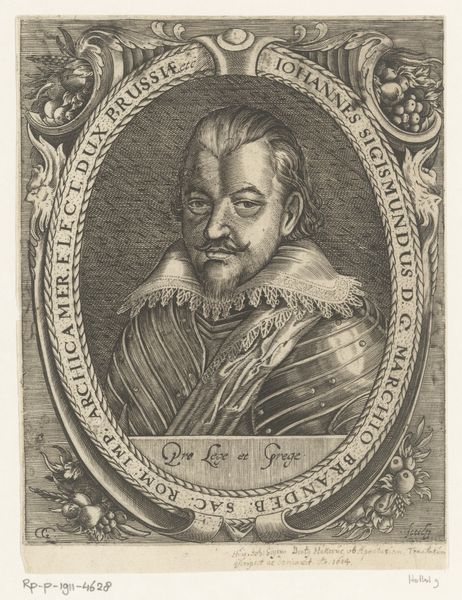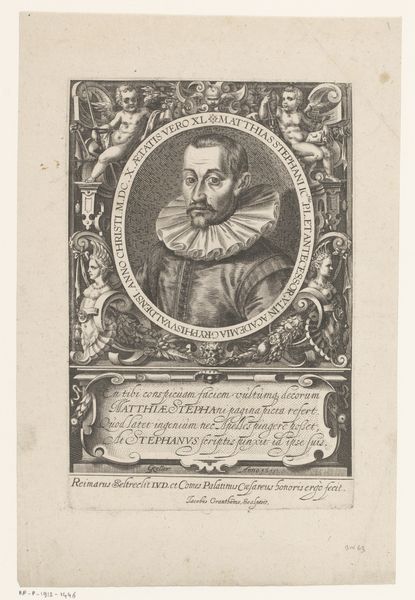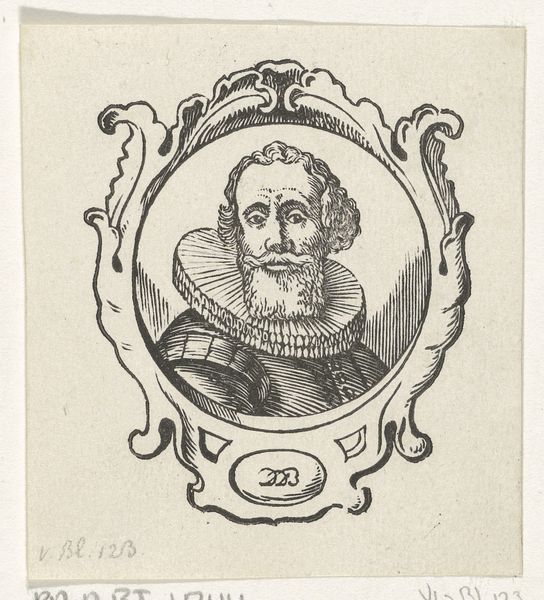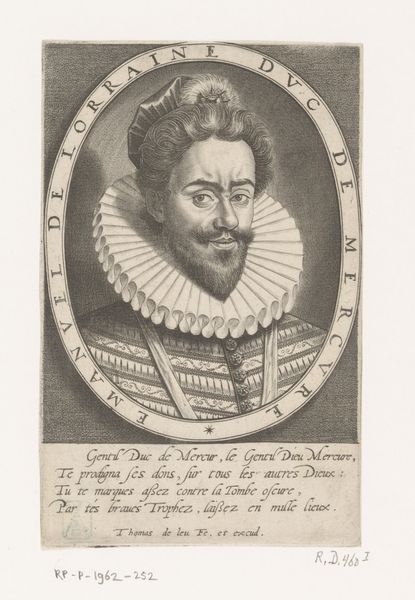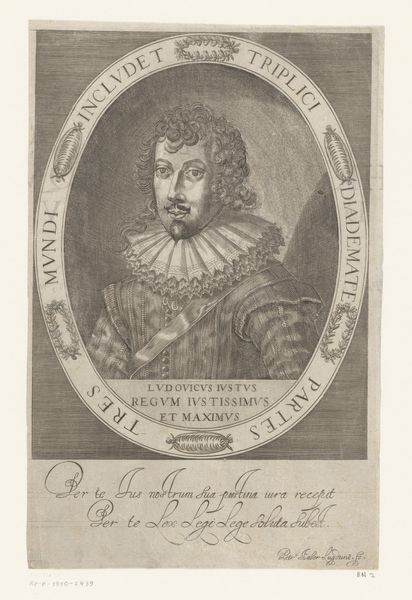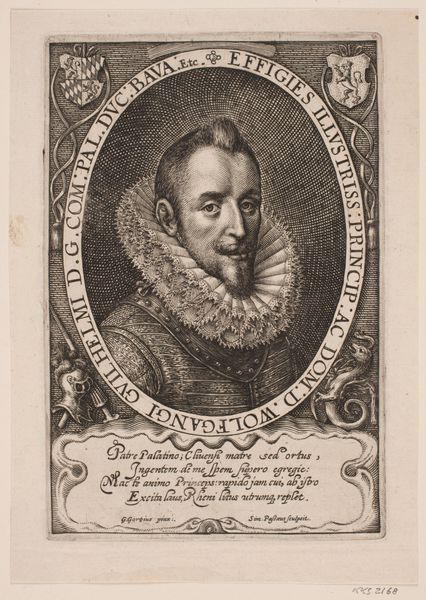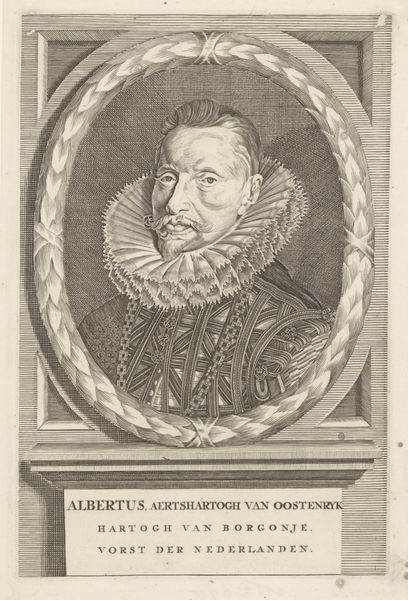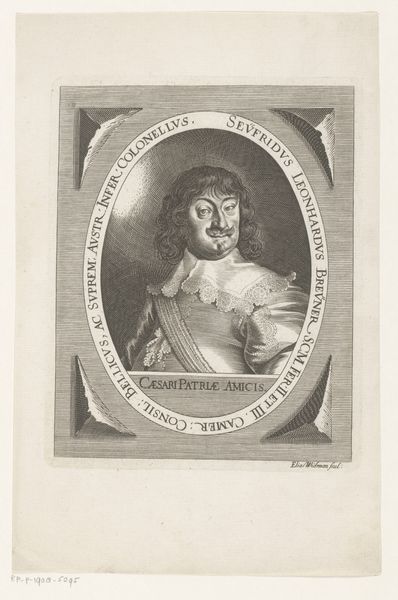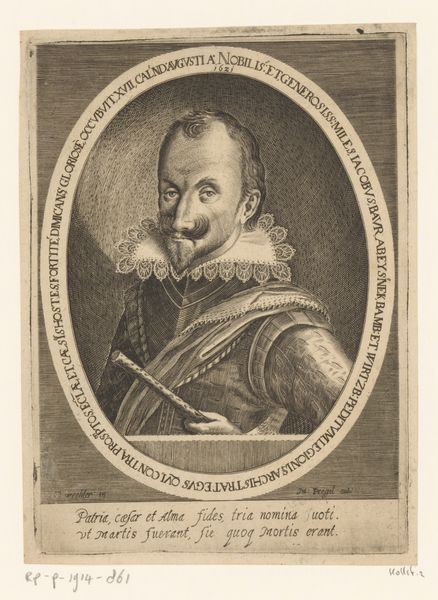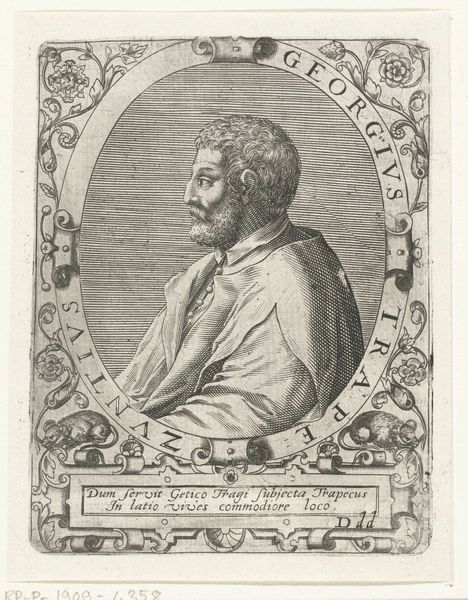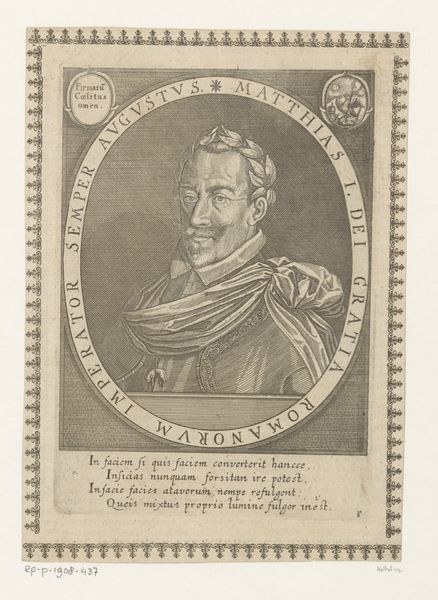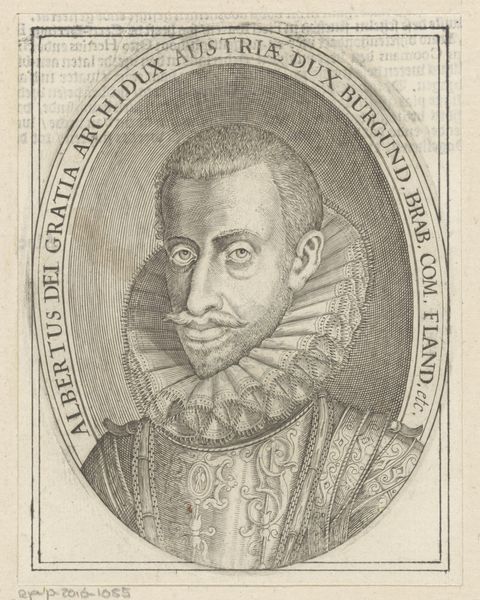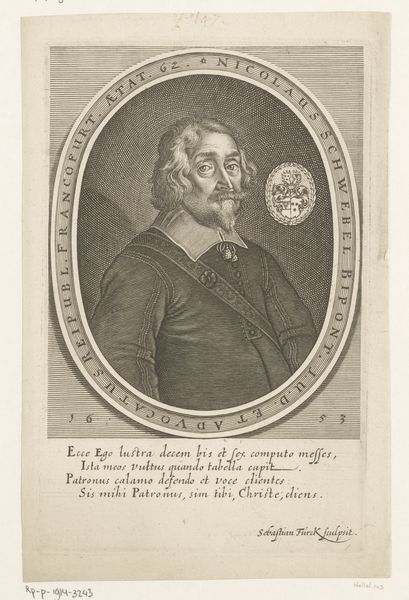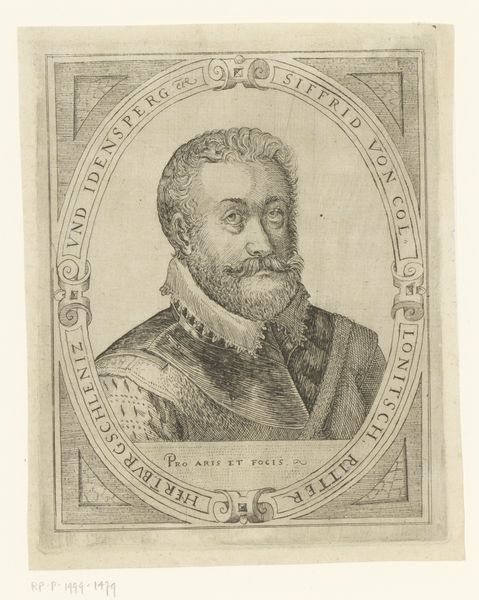
print, engraving
#
portrait
#
baroque
# print
#
caricature
#
portrait drawing
#
history-painting
#
engraving
Dimensions: height 162 mm, width 118 mm
Copyright: Rijks Museum: Open Domain
Editor: Here we have a print from 1650 depicting "Portret van Ferdinand II" by Johann Caspar Dooms, an engraving actually. The level of detail achieved through this medium is incredible; look at the way the light interacts with that ruff. What can you tell me about how this print functions in its time? Curator: As a materialist, I see this engraving primarily as a product of labor. Consider the painstaking process required to create this image. Each line, each shadow, etched into the copper plate by hand. What does the production of this image, a portrait, tell us about Ferdinand’s power and its dissemination? Editor: That's interesting, I hadn't thought about it in terms of labor. So you’re saying the medium itself speaks to Ferdinand’s status? Curator: Exactly! Engravings like this were often reproduced and distributed widely. Think about the network involved: the artist, the engraver, the printer, the distributors. The availability of Ferdinand’s image, crafted through specific material practices, served to reinforce his authority. How does the choice of engraving, versus another medium, impact its accessibility and therefore its power? Editor: So the print acts as propaganda? It's not just about likeness, but about the *spread* of that likeness and the material conditions that enable that. I see the print’s function as tied to this production process. Thanks! Curator: Precisely. By analyzing the materials and processes involved, we uncover the social and political work that this image performs.
Comments
No comments
Be the first to comment and join the conversation on the ultimate creative platform.
